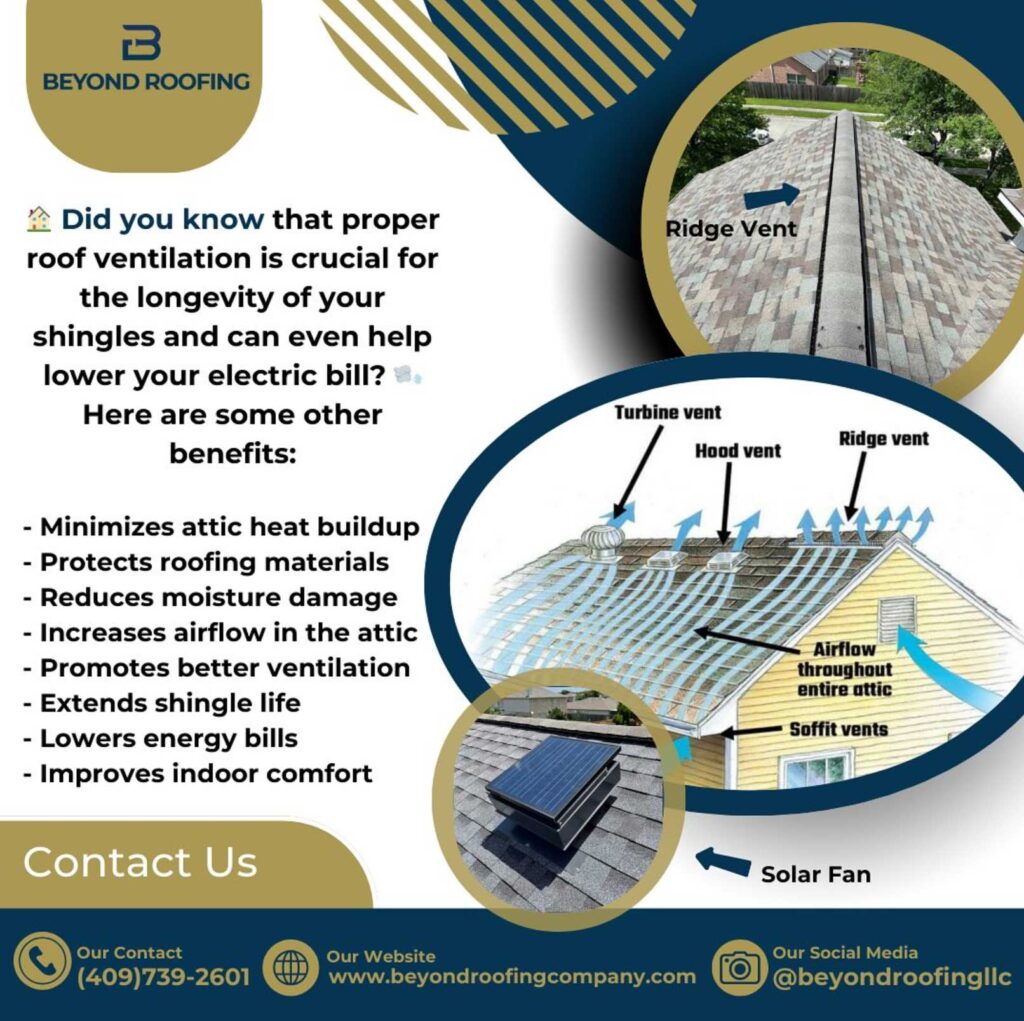How Roof Ventilation Protects Your Home and Cuts Energy Costs
Roofing is more than shingles and flashing—it’s a system. And one of the most overlooked components of that system is roof ventilation. At Beyond Roofing, we often see how proper ventilation can make or break a roof’s longevity, impact a home’s energy bills, and even affect indoor air quality.
If you’re replacing a roof, dealing with high energy costs, or noticing issues like attic moisture or mold, it’s time to take roof ventilation seriously. Here’s why it matters—and how it can help you save money in the long run.
Whether you need a free roof inspection or a full roof replacement, we will ensure your ventilation system is functioning properly to protect your home, lower energy costs, and extend the life of your roof.

8 Key Benefits of Proper Roof Ventilation
✅ Minimizes Attic Heat Buildup
Attic temperatures can exceed 150°F in the summer. Ventilation allows heat to escape, preventing excessive buildup that strains your AC and increases cooling costs.
✅ Protects Roofing Materials
Excess heat and moisture can deteriorate roof decking, insulation, and underlayment. Ventilation keeps the attic dry and stable, helping protect these critical components.
✅ Extends Shingle Life
Heat buildup from a poorly ventilated attic can cause shingles to blister, curl, or degrade faster. Ventilation keeps the roof surface cooler, reducing wear and prolonging the lifespan of your shingles.
✅ Prevents Mold and Mildew
Poor ventilation traps humidity, creating ideal conditions for mold, mildew, and rot. A steady flow of air reduces this risk and helps maintain healthy indoor air quality.
✅ Lowers Energy Bills
With a cooler attic, your air conditioning system doesn’t have to work as hard. That can lead to lower energy bills—especially during hot, humid months in Texas.
✅ Improves Indoor Comfort
Proper airflow in the attic helps stabilize indoor temperatures, making your home more comfortable year-round, especially during extreme heat.
✅ Extends Roof Lifespan
By protecting shingles, decking, and structural materials from damage, good ventilation helps your roof last longer and saves you from early replacement costs.
✅ Helps Prevent Ice Dams (in colder climates)
Ventilation keeps attic temperatures more consistent with the outside air, helping prevent the freeze-thaw cycle that creates damaging ice dams along roof edges.
Signs Your Roof May Be Poorly Ventilated
- Your attic is excessively hot or humid
- Energy bills are unusually high
- Mold or mildew is visible in attic spaces
- Shingles are cracking, curling, or aging too fast
- Ice dams form in winter (for colder regions)
Common Types of Roof Vents
Choosing the right ventilation system depends on your roof design and home needs:
- Ridge Vents – Continuous exhaust vents at the roof peak
- Soffit Vents – Intake vents under the eaves
- Gable Vents – Wall-mounted for side-to-side airflow
- Turbine Vents – Wind-powered, spinning exhaust vents
- Powered Attic Fans – Motor-driven for enhanced airflow
Beyond Roofing: Ventilation That Works for Texas Homes
At Beyond Roofing, we know what Houston Area heat can do to a home—especially one with poor attic airflow. That’s why we include ventilation assessments in all roofing inspections and new installations. Our goal is to give you a roof that performs, protects, and lasts.
Schedule Your Free Roof & Ventilation Checkup
Let us make sure your attic ventilation is working as hard as your roof. Call Beyond Roofing today to book a free consultation and find out how much a well-ventilated roof can save you in energy costs, repairs, and peace of mind.
